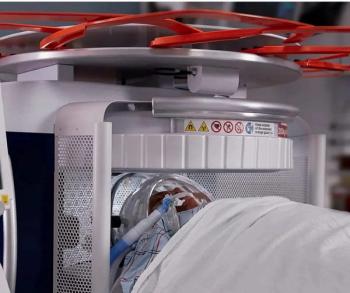
ISMRM welcomes radiologists to 21st-century radiology
We are already eight years into the New Millennium. The Y2K crisis is a distant memory, and debate about whether the new century actually began in 2000 or 2001 is far behind us.
We are already eight years into the New Millennium. The Y2K crisis is a distant memory, and debate about whether the new century actually began in 2000 or 2001 is far behind us.
Yet the fact that we somehow crossed a great divide back in '00 finally sank in during the 2008 International Society for Magnetic Resonance in Medicine meeting in Toronto because the MRI community crossed another threshold this year.
Unless you religiously attend the ISMRM annual meeting, you may need a little background. The ISMRM is unique among the major scientific meetings in radiology. Unlike the Society of Nuclear Medicine annual meeting, the European Congress of Radiology, or the granddaddy of them all - the RSNA meeting - the ISMRM meeting is an incubator of ideas for the design, performance, and diagnostic potential of MRI.
The ISMRM meeting is an incubator not just because it cultivates new ideas. The clinical applications that grow out of the ingenuity of the society's members tend to be whisked away for presentation at other medical specialty meetings when they approach readiness for clinical use.
Some promising imaging strategies seem to dwell in the preclinical realm forever. One molecular imaging session at the 2008 ISMRM meeting was even entitled the "Great Wall." The translation of small animal research to human trials, for example, is formidable. That is why it was such a pleasure to see several technologies first proposed in the 20th century make the leap to practical clinical applications here in the 21st century.
The 2008 ISMRM meeting was a coming out party for MR elastography. Dr. Richard Ehman, director of MRI research at the Mayo Clinic in Rochester, MN, invented the technique in the mid-1990s and first proposed it as a novel concept at an ISMRM meeting long ago.
His plenary lecture at the 2008 meeting signaled the technique's readiness for prime-time. MR elastography plots the progression of liver fibrosis with greater than 95% sensitivity. As a result, it has become the leading indication for abdominal MR at Mayo Rochester, he said. More than 500 MR elastography procedures have been performed on humans at Mayo.
Diffusion MRI for monitoring early response to brain therapy is also close to spanning the divide. University of Michigan researchers reported at the meeting that their diffusion mapping technique offers an accurate assessment for the response of brain cancer to therapy just three weeks after the initiation of treatment. The technique is just as accurate as conventional MacDonald criteria that assess the patient's prognosis 10 weeks after the start of treatment. The findings are so powerful it is hard to imagine that the prognostic mapping technique will not soon slip into the mainstream.
I first reported about the clinical potential of hyperpolarized helium-3 MRI at the 2001 ISMRM meeting in Glasgow and was, in fact, criticized by readers for prematurely drawing attention to it. Hyperpolarized He-3 MRI is still a protocol in search of an application, but papers presented at the 2008 meeting demonstrate that it is so sensitive to changes in pulmonary function in human clinical trials that clinical adoption is destined to happen soon.
Experiences with these three technologies just scratch the surface of MRI innovations that are breaking out of preclinical limbo. We no longer have to wonder if the promise of the molecular imaging age will affect clinical radiology in our lifetime. It's happening now in the 21st century.
Newsletter
Stay at the forefront of radiology with the Diagnostic Imaging newsletter, delivering the latest news, clinical insights, and imaging advancements for today’s radiologists.

























